 Home
Home
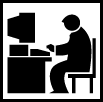 Web Sites
Web Sites
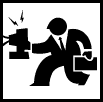 Consulting
Consulting
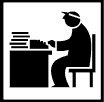 Accounting
Accounting
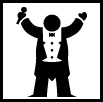 Digital Life
Digital Life
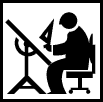 Articles
Articles
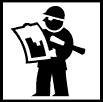 Projects
Projects
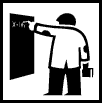 eLearning
eLearning
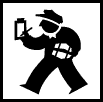 Contact Us
Contact Us
|
Written on April 15, 2002 by Robert & Karen Vanderzweerde
Appeared in Greenmaster Magazine
Working Offline
Many people don't realize that you can compose e-mail messages
"off-line" (or when you are not connected to the internet). If you
have a permanent Internet connection, then it doesn't matter, but if you use a
dial-up connection where you pay for the amount of time you are connected, then
composing off-line saves you money. Just compose your message and do the first
"send" as you normally would. When you exit Outlook, you will get a
message that there are messages that have not been sent. That's OK, the next
time you are on-line, when you do "Send and Receive" mail, your
messages will be sent. For short messages, it probably won't make much
difference, but on longer messages or messages that you want to think about and
edit, you could save quite a bit of connect time. Similarly, even if you are
on-line but have a message that you aren't ready to send, you can save a draft
by selecting "File" then "Save". The message will be saved
in your "Draft" folder. You can edit it later and send it when you are
finished.
Spell Checking
When you send a message, you can spell check it. Do your contacts a favour
and make sure you correct your spelling! You can do a spell check at any time by
selecting "Tools" and then "Spelling and Grammar". Make it
even easier, and set Outlook up to do the spell check automatically. Go to
"Tools", then "Options", then click on the
"Spelling" tab. You will see an option that says "Always check
spelling before sending". Click on that box, and your spelling worries are
over!
Importance Setting
You can mark the importance of your message has low, normal or high. Under
"View", select "Options", and then pick the importance of
your message. You can also mark the sensitivity of your message as normal,
personal, private, or confidential. In addition, you can request an automatic
message back confirming that your message has been read! In the "Tracking
Option" box, click to enable a "read receipt" - very useful for
sensitive messages. Just remember that not all e-mail systems support this
feature, so the recipient's computer may not be able to respond.
Saving Replies
In the same section ("View, Options") you can also set the Folder
that you want the replies to your e-mail sent to, save the message in a
different folder, and "post-date" your message (useful for birthday
greetings or reminder messages). Just remember that if you use a dial-up
connection, you must be connected on the date you select for a post-dated
message to be sent!
Cc and Bcc
You can send a copy of your message to as many people as you would like by
either entering their e-mail addresses or clicking on them from your address
book so they appear in the "Cc" box at the top of your message. You
can also send a "blind" copy by using the "Bcc" box, which
will appear if you click on "Cc". A blind copy will go to the person
you specify, but the original recipient won't know that a copy went to that
person.
Replying and Forwarding
When you receive a message, you can reply to the message on the original
message without starting a new one. This is useful because it gives both the
original message and the response in one message. The message can go back and
forth, with more replies and comments being added, as often as needed. It can
give you a record of questions and responses. When you read a message that you
want to reply to, select the "Reply" button on your toolbar. You can
then type your reply into the message. The "Reply" button will send
your response to the person who sent you the e-mail. The "Reply All"
button will send your response to the original sender and all recipients marked
to receive a copy of the message. Make sure you press, "Send" when you
are done.
Sometimes you receive a message from someone that you want to forward on to
someone else. Use the "Forward" button and enter the e-mail address
(either by typing it in or selecting the name from your address book). You can
add your comments, if you want. When you are done, don't forget to press,
"Send"!
Adding a Signature
To make your messages look more professional, use the "Signature"
feature. A signature is a tag line that appears at the end of your message. It
can be your name, company name, phone and fax contact information, a quote,
slogan, or whatever seems appropriate to you. To create a signature, use
"Tools", "Options", and "Mail Format". Click on
the "Signature Picker" button to open the dialogue box. Click
"New" to create a new signature, give it a name and click
"Next". Enter the text for your signature, and then click on
"Finish" and "OK" to close the Signature Picker dialogue
box. You can set up several signatures that may be appropriate for different
messages.
To insert the signature in your message, click where you want the signature
to do, and then choose "Insert" then "Signature". You can
select the signature that you want from your list. To have a particular
signature automatically inserted in all your messages, go to "Tools",
then "Options", then "and Mail Format". Click "Use This
Signature By Default" and select the signature you want. Click
"OK". The message will be added automatically to each e-mail you
create. Signatures can be edited or deleted by following the steps in the
"Signature Picker" tool.
Sending and Saving Attachments
Sometimes you want to send an attachment along with your e-mail message. An
attachment might be a Word or Excel document, a photo, or data from any other
program you have on your computer. Prepare your message as you normally would,
and then select "Insert File" (the button on the toolbar that looks
like a paper clip). You will be given a view of the directories on your
computer, browse through and find the file you want to send and double click. A
copy will be added to your e-mail, and an icon will appear at the bottom of your
message. You can add several attachments to one message. Just remember that the
recipient of your message must have the appropriate software to view the
attachment - they won't be able to see your photo if they don't have any photo
software. Also, if the attachments are very large files, they may not transmit
properly.
When someone sends you a message with an attachment, the message is generally
saved in your "Inbox". You have to open the message to get at the
attachment. This can be inconvenient, even if you have organized your mail into
Folders. For example, clients often send me Excel or Word documents that I want
to use, edit, and then send back to them. I can save the attachment, separately
from the message, by clicking on "File" and then "Save
Attachment". You can then save the file properly in the directory that it
belongs in and you can access it the way you access files when you use other
software.
Try some of these features soon and become an e-mail pro!
|







